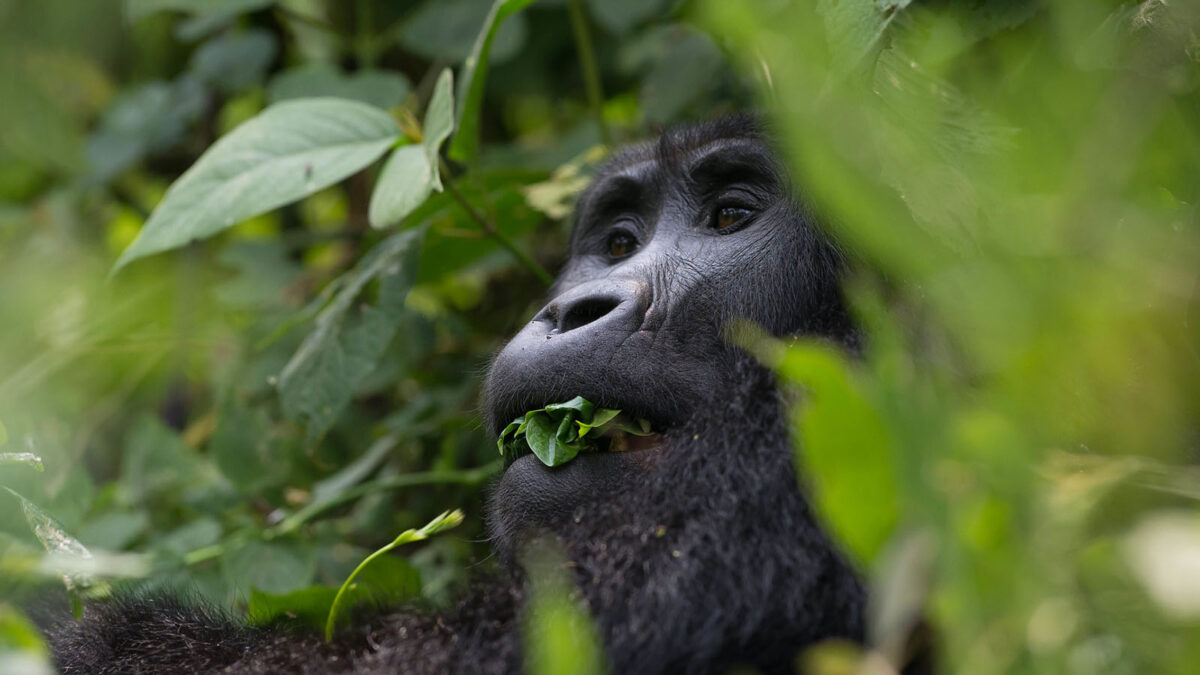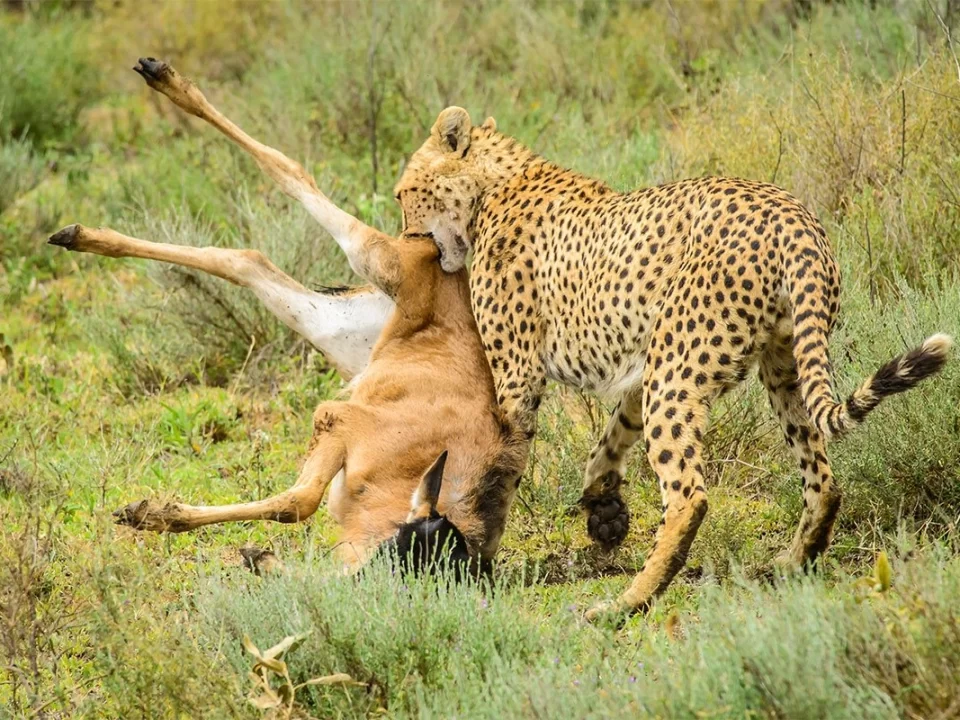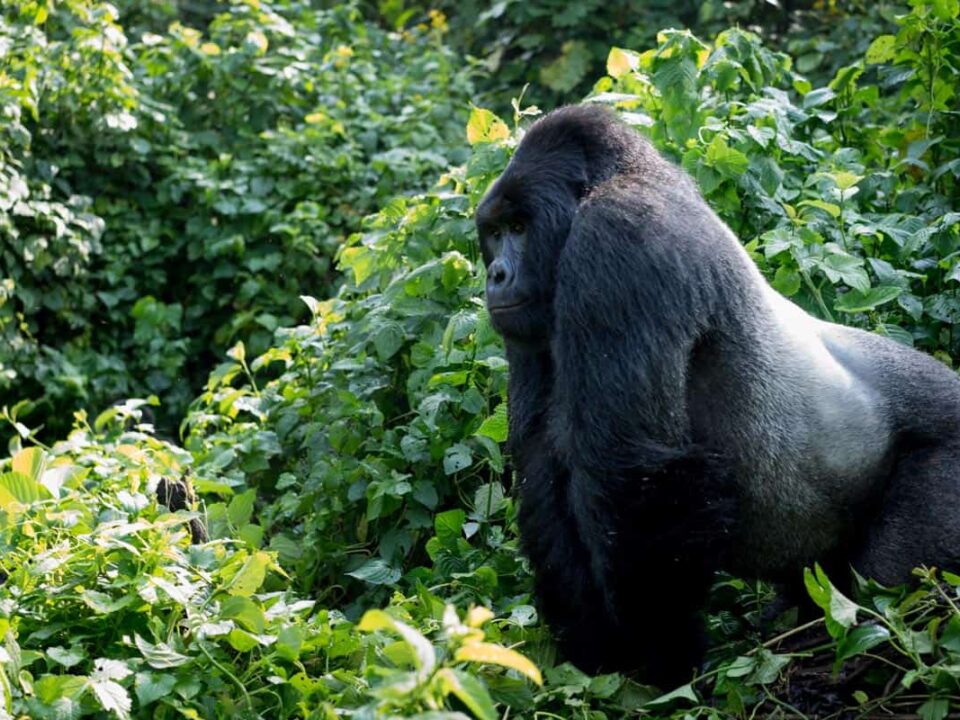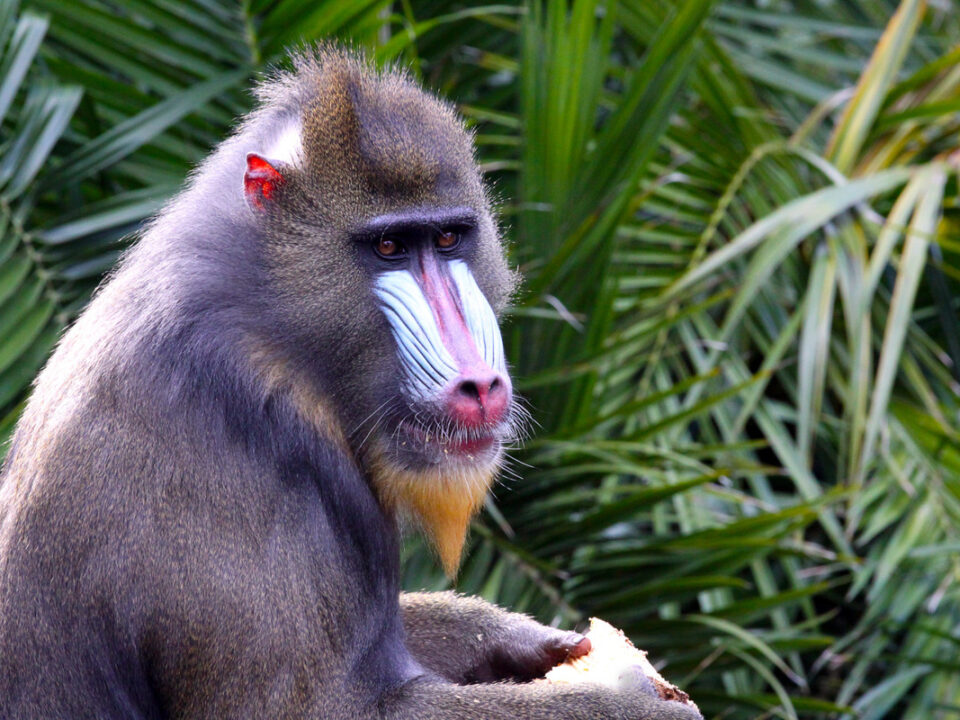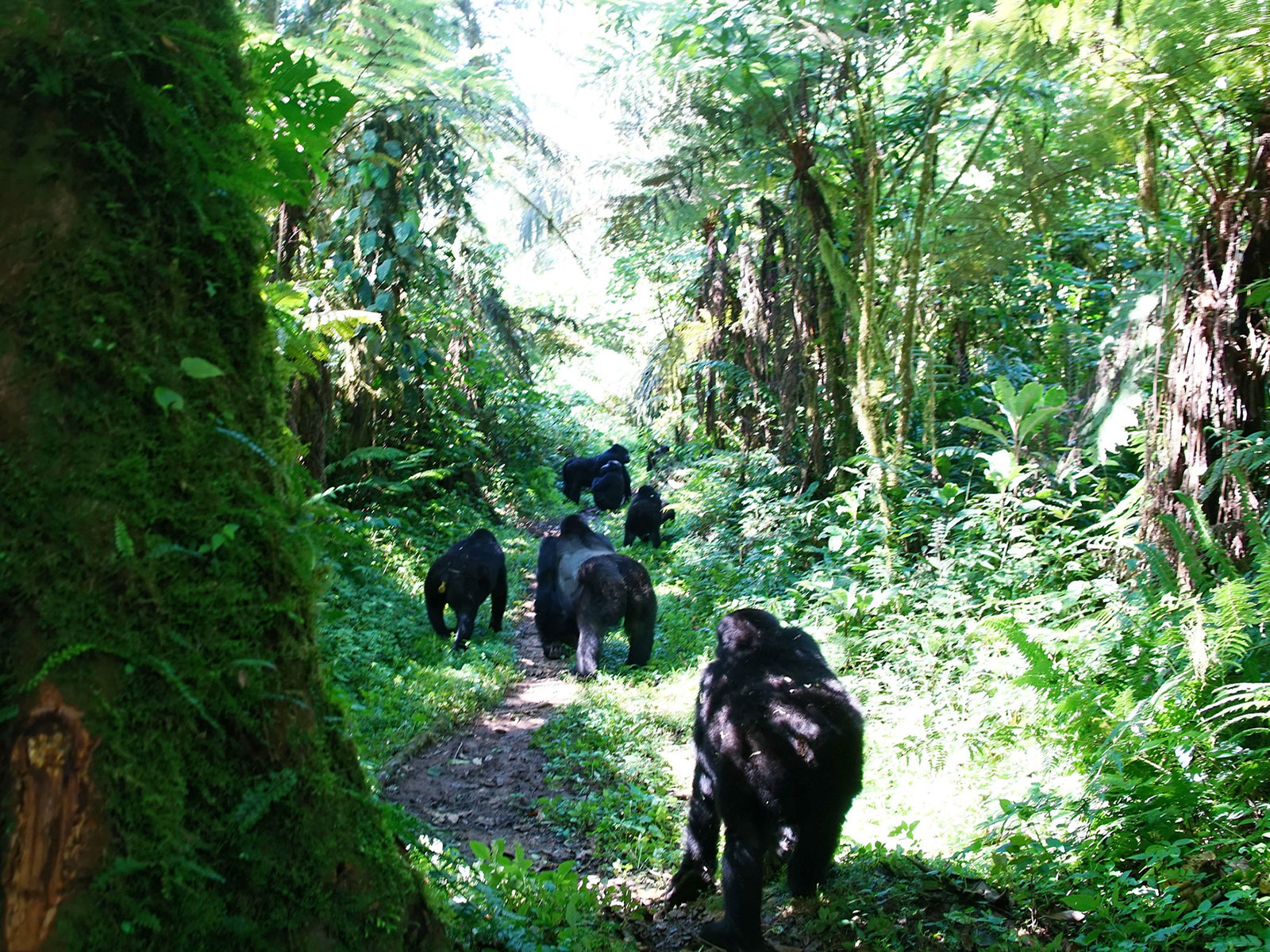
Is there a Gorilla Habituation Experience in Rwanda?
August 15, 2023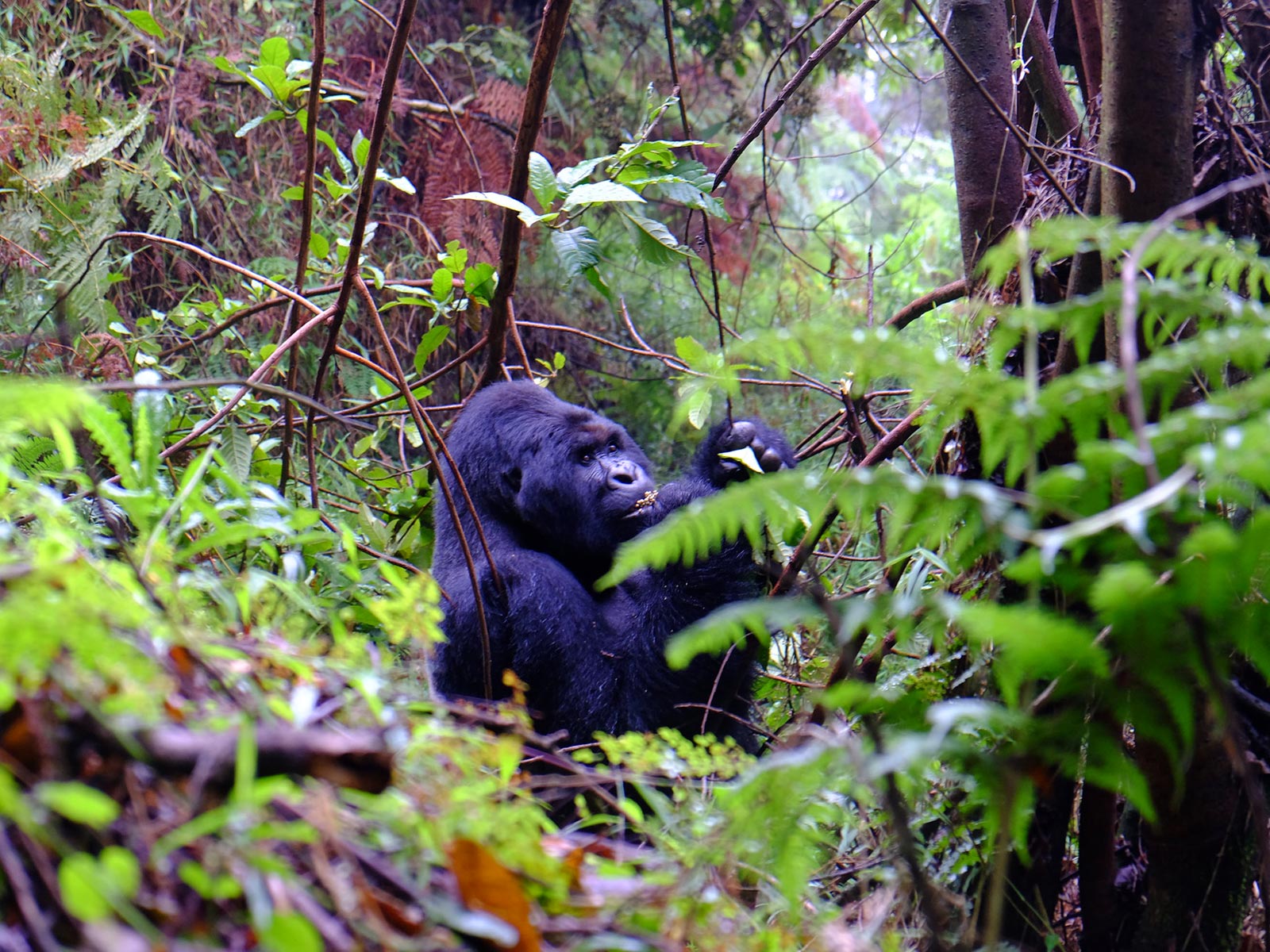
Compare Gorilla Trekking Rwanda and Uganda
August 15, 2023Current Mountain Gorilla Population
The question looms: How many mountain gorillas are left? Since their serendipitous discovery in 1902, the population of Mountain Gorillas has faced a steady and concerning decline. Presently, a mere 1080 Mountain Gorillas remain in the world, their existence hanging by a thread within their natural habitats. These remarkable creatures can solely survive in the wild. A somber reality emerges as they are classified as critically endangered, igniting a sense of urgency to avert the looming threat of extinction.
Habitat and Distribution
Mountain Gorillas find solace in their natural havens within the Virunga region, encompassing four safeguarded domains. These sanctuaries include the Virunga National Park in the Democratic Republic of Congo, the Volcanoes National Park in Rwanda, and the Bwindi Impenetrable Forest National Park and Mgahinga Gorilla National Park in Uganda. Their existence thrives in the wild, with captivity being an exceedingly rare prospect for these majestic beings.
Pressing Threats and Conservation Efforts
The trajectory of Mountain Gorilla population has been marred by an array of threats, primarily driven by human activities. Habitat loss and encroachment, coupled with hunting, have resulted in a significant decline. The establishment of protected areas offers a beacon of hope, as these enclaves facilitate the resurgence of Mountain Gorilla numbers. By safeguarding their habitats and preventing human intrusion, these protected zones aim to reverse the tide of decline, extinguishing the threat of hunting.
Challenges in Population Assessment
Population censuses for Mountain Gorillas are integral in tracking their numbers. Regrettably, the coordination of these censuses remains imperfect, with the three countries involved not conducting simultaneous assessments. Consequently, ascertaining the accurate population count at any given point becomes a formidable challenge. Notably, Uganda undertakes the population census within the Bwindi Impenetrable National Park and Mgahinga Gorilla National Park.
Parallelism with Human Genomic Similarity
A striking resemblance unfolds between Mountain Gorillas and human beings. A staggering 98.6% of their genomes align with ours, and 99.6% of their DNA mirrors our own. This genetic kinship underscores the intricate interconnectedness between these sentient beings and humankind. It is worth noting that only Chimpanzees boast a greater genetic similarity to humans.
Historical and Current Population Trends
A retrospective analysis reveals a distressing trend since the Mountain Gorillas‘ discovery. Factors such as habitat loss, uncontrolled hunting, conflict, and even the illicit pet trade precipitated a drastic population decline in the early 19th century. However, a glimmer of optimism surfaces in recent times. Through dedicated conservation endeavors, the Mountain Gorilla population has exhibited a gradual resurgence. The numbers have risen from a mere 620 individuals in 1989 to an approximate count of 1080 today.
Gorilla Trekking’s Role in Conservation
Gorilla trekking stands as a beacon of hope in the crusade to conserve these majestic creatures. A highly coveted activity across East Africa, it contributes significantly to their preservation. The acquisition of a Gorilla trekking permit, priced at USD800 per trek in Uganda, USD1500 in Rwanda, and USD450 in the Democratic Republic of Congo, plays a pivotal role. A portion of these funds serves the dual purpose of supporting conservation efforts and funding research initiatives. Furthermore, these resources aid in community education and infrastructure development, forging a sustainable coexistence between humans and Mountain Gorillas.
In Closing: A Call to Action
With an intimate understanding of the critical status of Mountain Gorillas, one can recognize the urgency of the situation. Conservation efforts, driven by dedicated individuals and organizations, have borne fruit in recent years. By participating in Gorilla trekking experiences and contributing to their preservation, travelers play an active role in ensuring the continuity of these gentle giants. Embrace the opportunity to engage with Trek Africa Expeditions and leave a lasting impact on the conservation of Mountain Gorillas.

